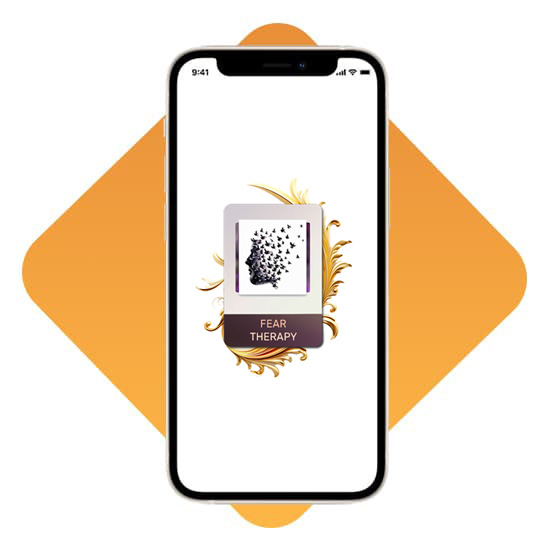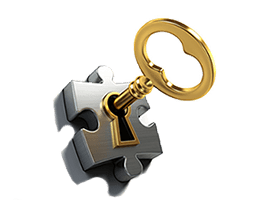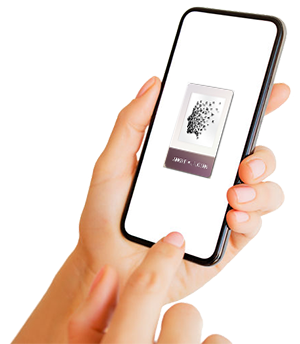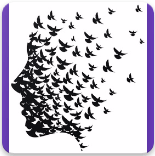K N O W L E D G E
Triggering/ Activation
Information about triggering.
Trigger – Information
9 min. reading time.
The (psychological) trigger comes from the English word for “trigger/activator”.
What does it mean to trigger someone? (Psychology)
Triggering means activating psychological, unprocessed wounds/injuries. The person affected then sees “red” psychologically, so to speak. This triggers abnormal reactions and these come with a strong intensity and can be (temporarily) very stressful. This can range from mild anger to outright hatred.
What triggers are there?
The trigger itself can be different things; a sentence, a question, a situation, a place, a sound. Anything that can remind you of an old, unprocessed experience and thus activate it. The reactions are usually inappropriate for the current situation and disproportionately strong; you react as if you were back in that old, significant emotional situation. If certain parts (e.g. fears, anger, sadness, shame) could not be integrated back then, they had to be repressed/split off into the unconscious. Hence these unusual reactions, which are usually incomprehensible to outsiders. They point to unconscious material that has been activated.
What happens during triggering?
Certain old (deep) psychological injuries are activated (hence the term re-traumatization). This can trigger various processes. The person affected feels thrown back into a stressful, overwhelming situation from the past (“flashback”). Old, unprocessed emotions such as loss of control, helplessness, sadness, shame, fear, anger or hatred can resurface. Anything from a mild irritable state to pure hatred and panic attacks can be triggered. The effects are so strong because these emotions come from the past, could not be integrated in the past and have been repressed into the unconscious as an emergency solution. This extreme situation may therefore often seem irrational to outsiders. Triggers can take many different forms and can always have different effects.
Why are you triggered?
Because your old, unprocessed, unconscious traumas/repressions are activated. You are exposed to this because you are usually unaware of your own triggers. You can’t stop the triggering or not let it happen, the reactions are inevitable. This is because there are actually so-called defense mechanisms to defend against these unprocessed emotions. These ward off these repressed, unconscious parts from the experience of consciousness. They are therefore excluded from the world of experience. When triggering, however, it is precisely these defense mechanisms that are deactivated or bypassed. This is why these extreme and abnormal effects occur. This is a process/experience that everyone has probably experienced at some point.
What does a trigger feel like?
There is often an unavoidable emotional chain reaction. It’s like watching a (bad) movie that you simply experience without being able to get out. In most cases, self-confidence is greatly diminished, anger and hatred arise, coupled with nervousness, stress, fear, sadness or frustration. The triggering itself usually doesn’t last too long, although you can of course get really emotionally stuck.
The good thing is that a trigger, as bad as it feels, resolves a small piece of this hurt.
What is triggered in me?
These are unprocessed, repressed/split-off parts, e.g. specific fears (fear of loss, fear of betrayal) that have been pushed into the unconscious. This happened out of an emergency situation (trauma) because these emotions were too overwhelming to be processed/integrated. These parts lie in your unconscious and have destructive effects. They are shielded by the defense mechanisms. When triggered, however, these mechanisms were unable to do anything, which is why such a strong reaction occurs.
What can you do about triggering?
A trigger cannot be avoided, the reactions are unavoidable. However, you can try to observe the following points.
De-identification: You should realize that the trigger is only what it is, namely an activator. It is not the real reason for the agitation/hate in you, but only the trigger. Realize that the unprocessed things are in YOU, not in the other person. The other person is not to blame. Don’t hate the messenger. Besides, no one knows what triggers the other person, so the triggering is almost always unintentional on the part of the other person. It’s important to say when something triggers you among people you are often with. You don’t need to explain yourself.
Remember: you are not ill, there is nothing wrong with you, these are completely normal processes that everyone goes through. Everyone also has psychological injuries like this.
But you can also treat triggers!
How can I treat triggers?
Triggers are very valuable signs. This is because they point to unconscious parts that have been repressed and are therefore no longer accessible to the conscious mind. In other words, the person affected no longer knows anything about these parts, they are excluded from their world of experience. This is therefore a valuable pointer to something that we cannot otherwise see and therefore cannot treat. These psychological injuries are often unconscious, specific parts, e.g. old unprocessed fears or other emotions. There are therefore two important steps in treating triggers:
- Identification of the trigger/identification of the repressed part
- Resolving the repressed part
Example:
There are people who react very sensitively to criticism. In other words, they can’t handle criticism at all. Even if you only intersperse very gentle and very little criticism, it can escalate completely. This is also a trigger, which is also based on an old, unprocessed fear. If someone can’t deal with criticism, then it’s usually a fear of criticism. This lies hidden and is protected by so-called defense mechanisms. The latter try to avoid all situations that could involve fear of criticism. There are a variety of different defense mechanisms that use different tactics to protect the person concerned from the unconscious parts. If it does happen that the person is confronted with criticism, this trigger phenomenon occurs. In the process, this old fear is activated and the person affected is briefly “flooded” with it. It feels like an electric shock and you immediately notice why there are defense mechanisms.
Once you have identified the repressed part, you can dissolve it. In most cases, it is exactly what the situation presents, the obvious: The trigger behind criticism is the fear of criticism. Problem with decisions, fear of decisions.
Practical: In the next section, you now have the opportunity to test yourself for various specific fears. This can be done very quickly and will give you certainty straight away. In other words, you can think about what is behind your triggers and test them out right here.
Once you have found what you are looking for, you can resolve it with the anxiety resolution app.
Check shares
Here you can now test for specific parts (fears, emotions and cognitions). So if you have an idea or suspicion about what lies behind your triggers, you can now find out quickly and effectively.
Start by clicking on the blue circle at the bottom right of the screen. The anxiety test will then open Enter your guess, e.g. (in the following format)
fear of criticism
or
the fear of being me
Once you have found what you are looking for, you can treat this part with our Fear Dissolve app. Thoroughly and without confrontation! So you no longer need to be afraid of the treatment!
Good luck!

Fear Therapy
Effective fear treatment in an app!
Effective content and techniques for treating fears/anxiety.
Thoroughly dissolve any fear, including the associated negative cognition/belief!
No direct confrontation (exposure) with the fear!
Also deals with individual cognitions and all other emotions such as shame, sadness, hate, anger, etc.
Buy the "Fear Therapy" app now for just 19.99 Euros!
Available in the Apple™ App Store or in the Google™ Playstore.


For all questions ...
... please do not hesitate to contact us. Whether it's a question of understanding, product details or questions about treatment.
We are happy to help!

„The great challenge of life lies in overcoming the limits within yourself
and to go as far as you would never have dreamed possible.“.”
Paul Gauguin (1848-1903), French painter, co-founder of Synthetism and pioneer of Expressionism



